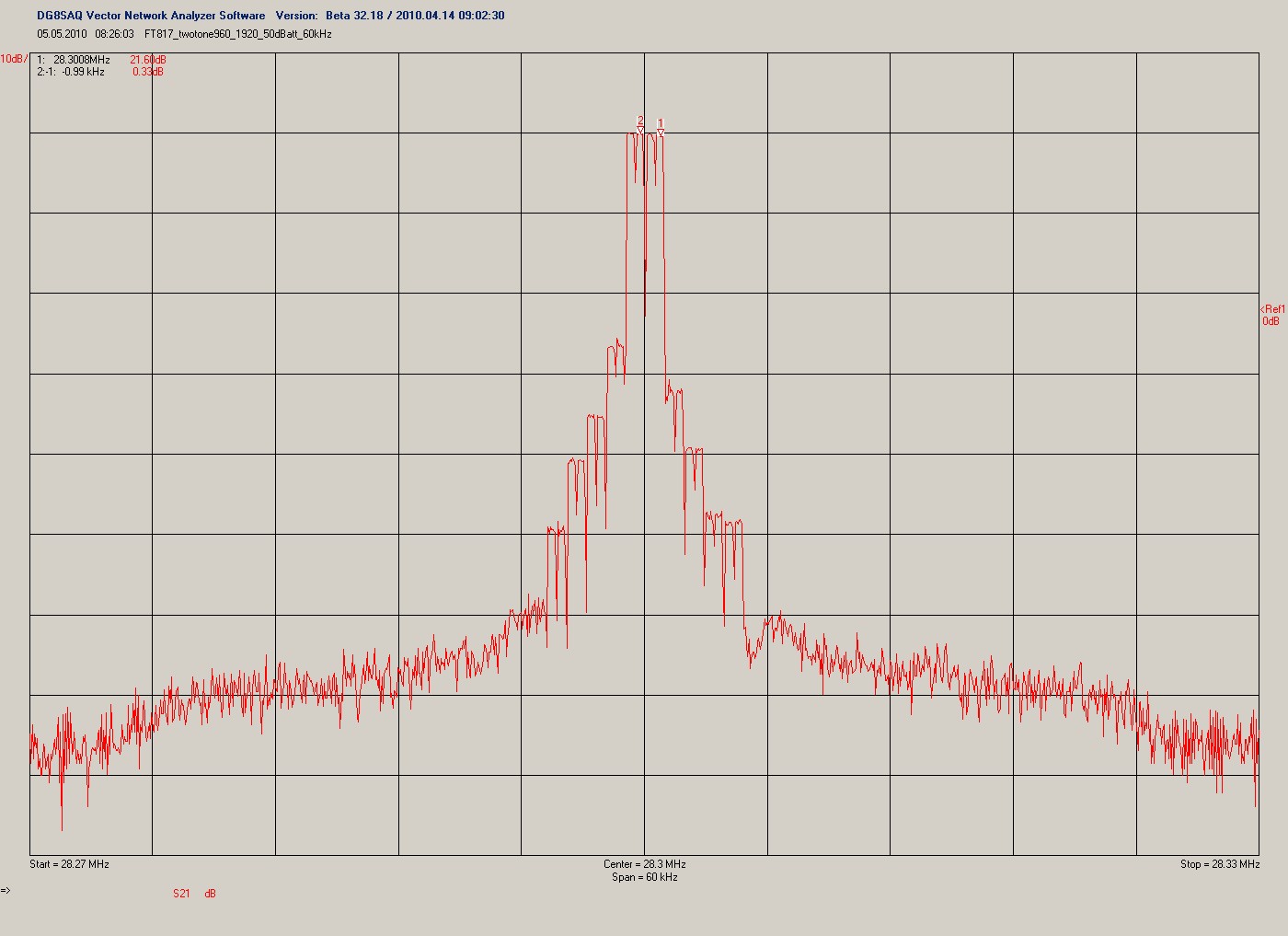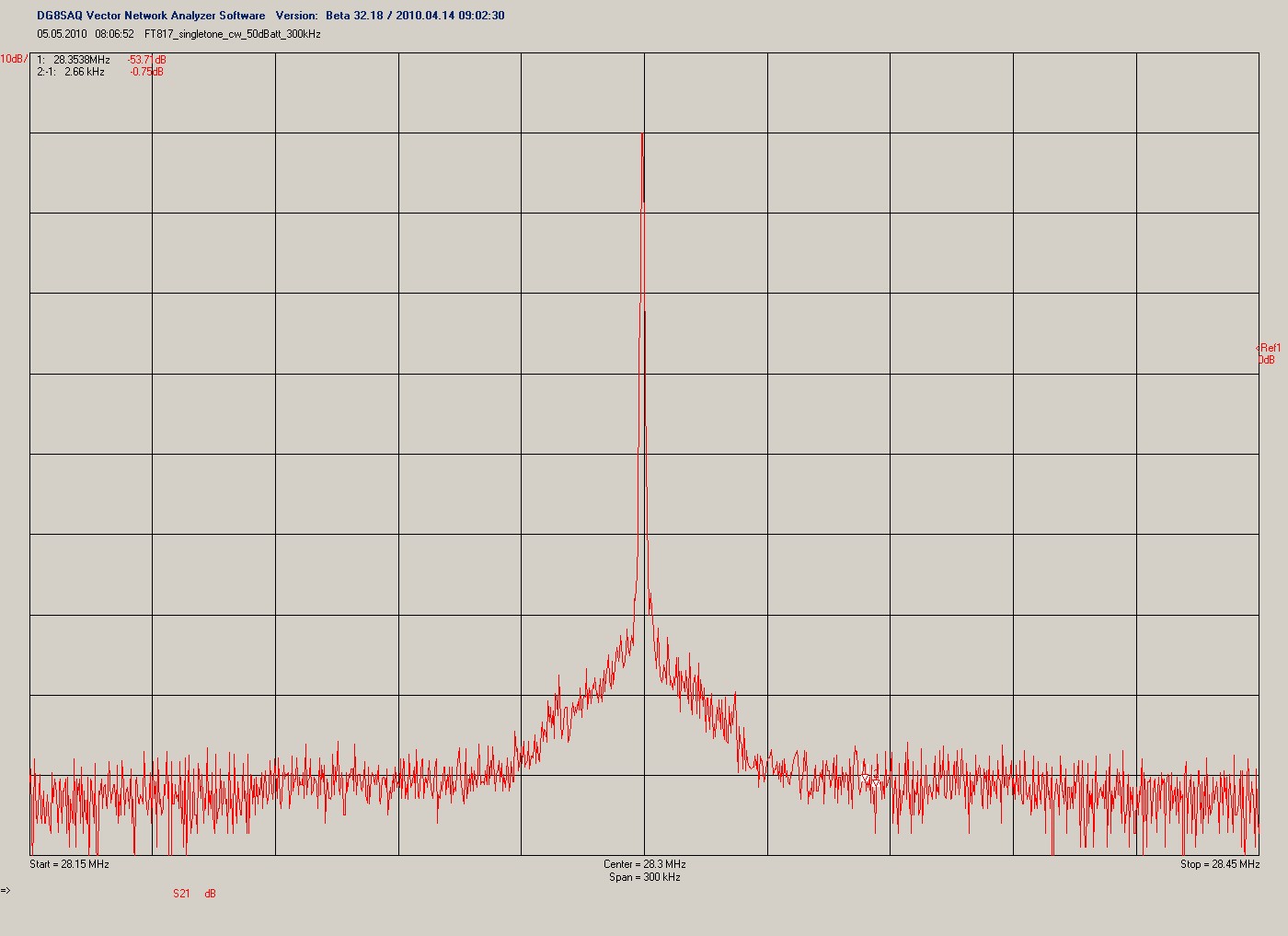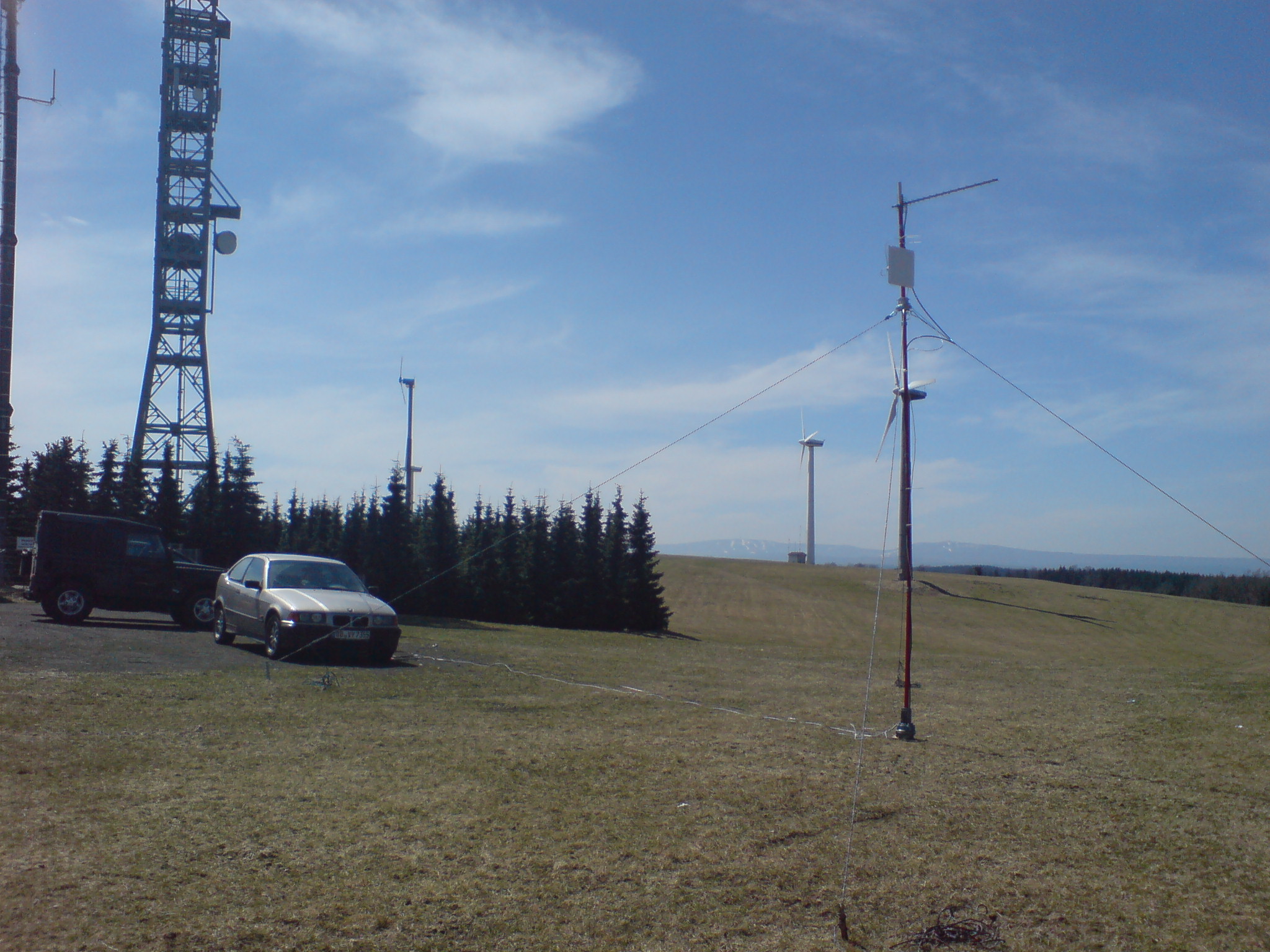Some months ago i purchased a defect Yaesu FT-817 radio. It turned out that PA and driver were defect. I was able to buy the PA transistors (RD07MVS1) and driver transistors (RD01MUS1) at DL2JWL (thanks!). I got some really good help in the 817-onair forum.
After the TX was operational i was interested in the output spectrum.
I did a singletone measurement (mode CW, 500mW) and a twotone measurement (mode DIG, 500mW, twotone signal from soundcard). Find the pictures below. The spectrum was measured with the DG8SAQ VNWA in spectrum analyser mode at 28MHz.
Please note that the RBW was 750Hz and you may want to recalculate noise levels.
One word about the twotone spectrum: The VNWA uses rectangular filters. Therefor the discrete tones apear to be rectangular spectrum. The gap inside each of the tones comes from the AC coupling of the measurement system which causes a notch at zero beat frequency.
The measurement results appear to correspond with spectral measurements by some OM in the US done some years before and measurements done by DF9IC. In fact the TX signal is not usable for a real contest because the sideband noise is around -80dBc within a bandwith of 3kHz.
Category Archives: Amateur Radio
Talk about DG8SAQ VNWA2
Yesterday i held the talk about the VNWA a second time. This time for a local electronics community. Therefore i updated the slides a bit. Please view in fullscreen mode. Here they are. (In german language only !)
DUR Contest April 2010
This was my first DUR activity this year. I found time to participate from Hirtstein/JO60OM. DL2LCE and DL8WQQ were there as well and operated some hundred meters away. This was the first time i tried my FT-817 together with the transverter and a new LNA stage as well. Surprisingly heard no beacons before the contest started. But a test with DG0VOG showed that all things were working properly, puuh. Unfortunately there were complaints about my signal by DL2LCE which i have to follow up now. So i did not call CQ on my own and just worked stations. In the end i had 18QSO and around 1200km in sum.
BTW. the small panel antenna is for 5GHz WLAN as it can be used for Hamnet.
AX25 with OpenWRT backfire 10.03
Today i tried OpenWRT backfire 10.03 with AX25. Last versions i had hard problems getting ax25 compiled for brcm47xx and also problems with the floting point emulation inside the kernel. First made usage of the native linux ax25 tools impossible and last prevented usage of the popular ax25 router software xnet (which is unfortunately closed source). Either one or the other worked.
Today first the AX25 stuff was not build as well when i selected kmod-ax25 inside “make menuconfig”. But after i selected the ax25 kernel support inside “make kernel_menuconfig” suddenly the kmod-ax25 module was build. That happened never before ;) I also switched on kernel FPU emulation which is off per default. And what should i say. Also XNET worked after i flashed all the stuff to the router. So OpenWRT backfire should be an excellent point to start AX25 operation with.
digital amateur radio in saxony
I created a new yahoo group for communication about digital amateur radio topics in our local area. E.g. planning link-tests.
DVMODEM Yahoo Group
There is a new yahoo group (in german language) that is about the digital voice modem (DVMODEM) for the Siemens C5. This modem was created by DO1FJN, Jan.
Repairing FT-817
Recently i bought a used FT-817 (non ND version). I knew that it had a damaged PA but i should have read about the FT-817 in common before buying it ;) The PA finals were totally dead as well as one of the drivers.
Therefore i bought new ones at DL2JWL and replaced them. Especially at the finals unit this is not very easy and it is suggested to replace the complete final unit for unexperienced users.
In addition it is necessary to change some other parts at the final PCB as well. Now the amplifier stage works well again. But there are still some steps to do. For example exchanging the rotary channel encoder which is hard to get and to do all the adjustments in the service menu. In the end i hope to get a nice transceiver for usage as transverter IF stage.
D-Star with Siemens C5 (former Cellphone)
Last weeks i tested D-Star. Jan Alte, DO1FJN developed a digital voice modem PCB which can be mounted to the C5 cellphone from Siemens. The modem firmware and the user software that runs on the phone´s microcontroller is still in development but it does quite well already. I made a qso via the repeater DM0MW in Mittweida and also a direct qso with Peter, DL5DTL here in Dresden.
Overall the voice quality of the AMBE codec used in D-Star is not satisfying and FM sounds much better at the same signal level. The advantage of D-Star seems to be that you can carry data while doing a voice qso and you can receive a data channel on a repeater frequency. But is it worth investing the money for that ?
Anyway the modem from Jan is really impressive because the firmware is open source and it features a AVR32 microcontroller as well as an CPLD which enables to implement also other standards like APCO25, POCSAG or Packet Radio on it. Sounds it can be an interesting platform for implementing new ideas.
Gallery of my Laser station
I created a small gallery that shows some pictures of my laser station. Find it here:
Laser station gallery
HDLC/AX25 to serial KISS converter
Last day´s i continued working on my HDLC/AX25 KISS TNC software. It is far away from beeing finished but may be useful for someone already.
What´s it ?: You can connect an RF modem with NRZ or NRZI coded output. I just tested 1k2 and 9k6 bps AX25 modems. The microcontroller (currently Atmega644) decodes the frames and forwards it to a host PC via a serial KISS interface. This interface supports plain KISS, SMACK and RMNC-CRC-KISS. What´s not in this version is the CRC check for the received packets. This will be one of the next steps.
What it should be somewhen: A complete KISS/SMACK TNC which uses an external modem. Most probably this will not work on a Atmega644 because of the RAM limitations. I try to get it into an Atmega8515 with external SRAM. Another option might be a Atmega1281 or 1284 without external memory. For 1k2 (not sure for 9k6) is would also be possible to add the modem functionality directly to the microcontroller and therefore to safe the external modem.



